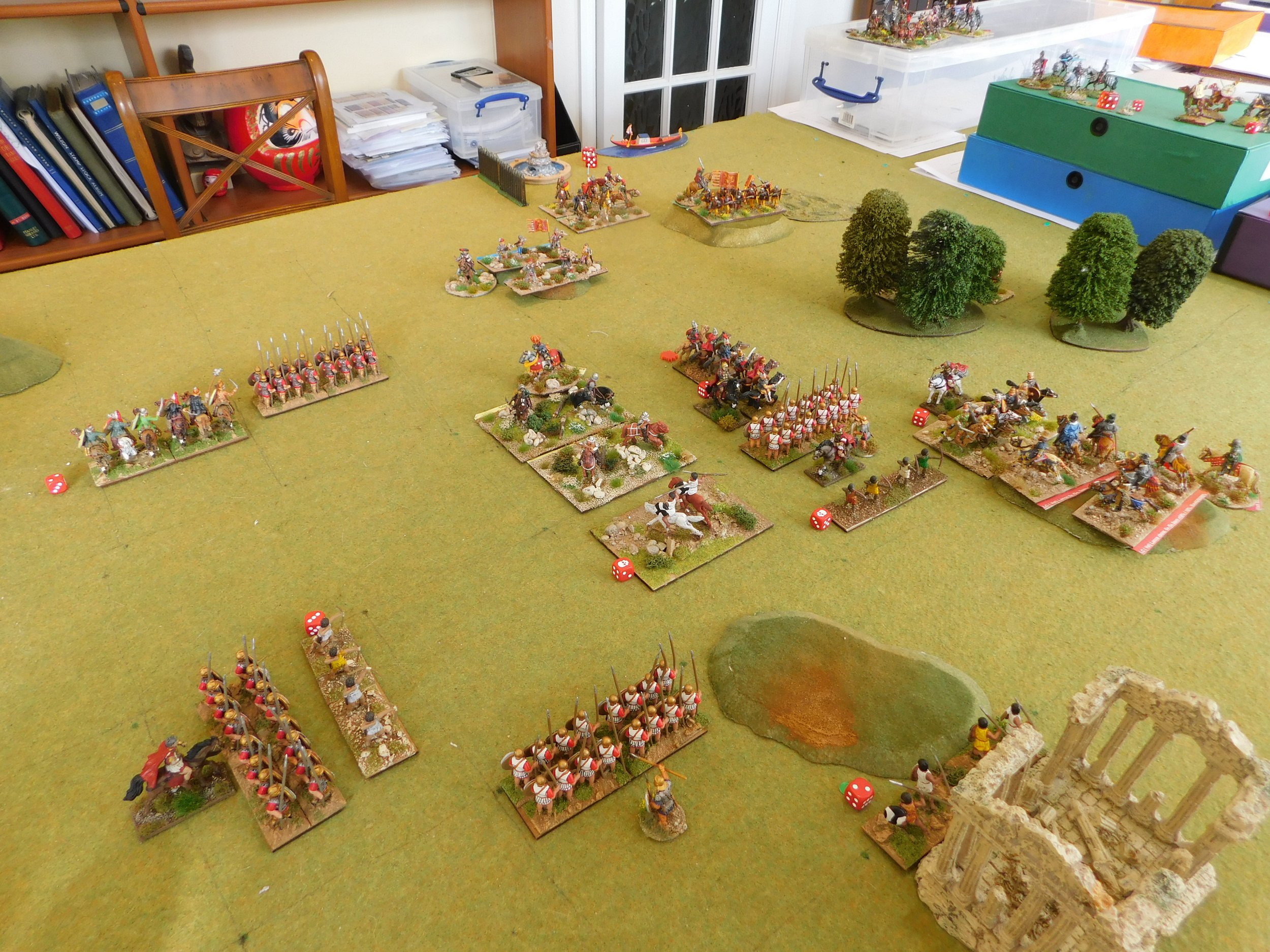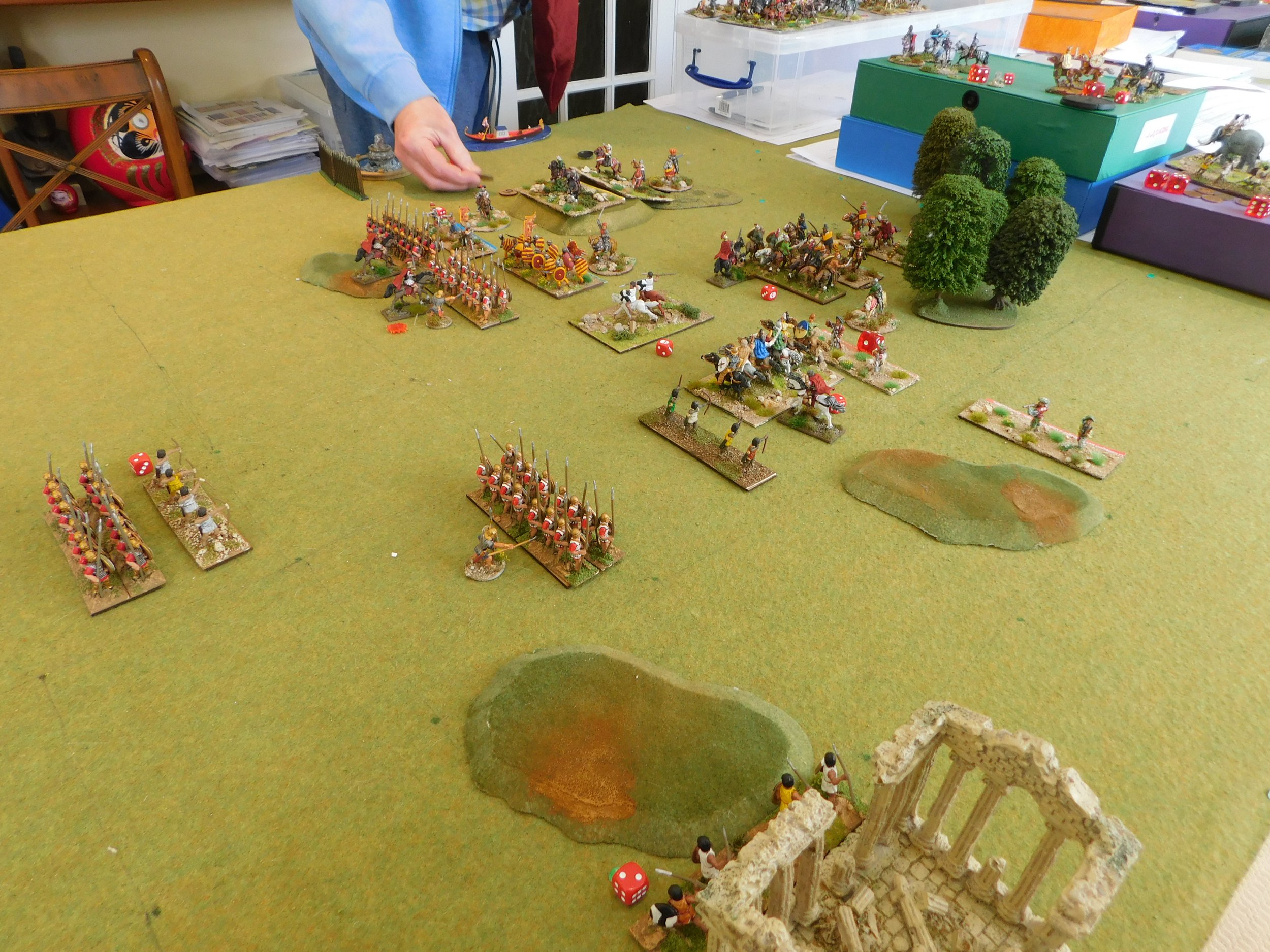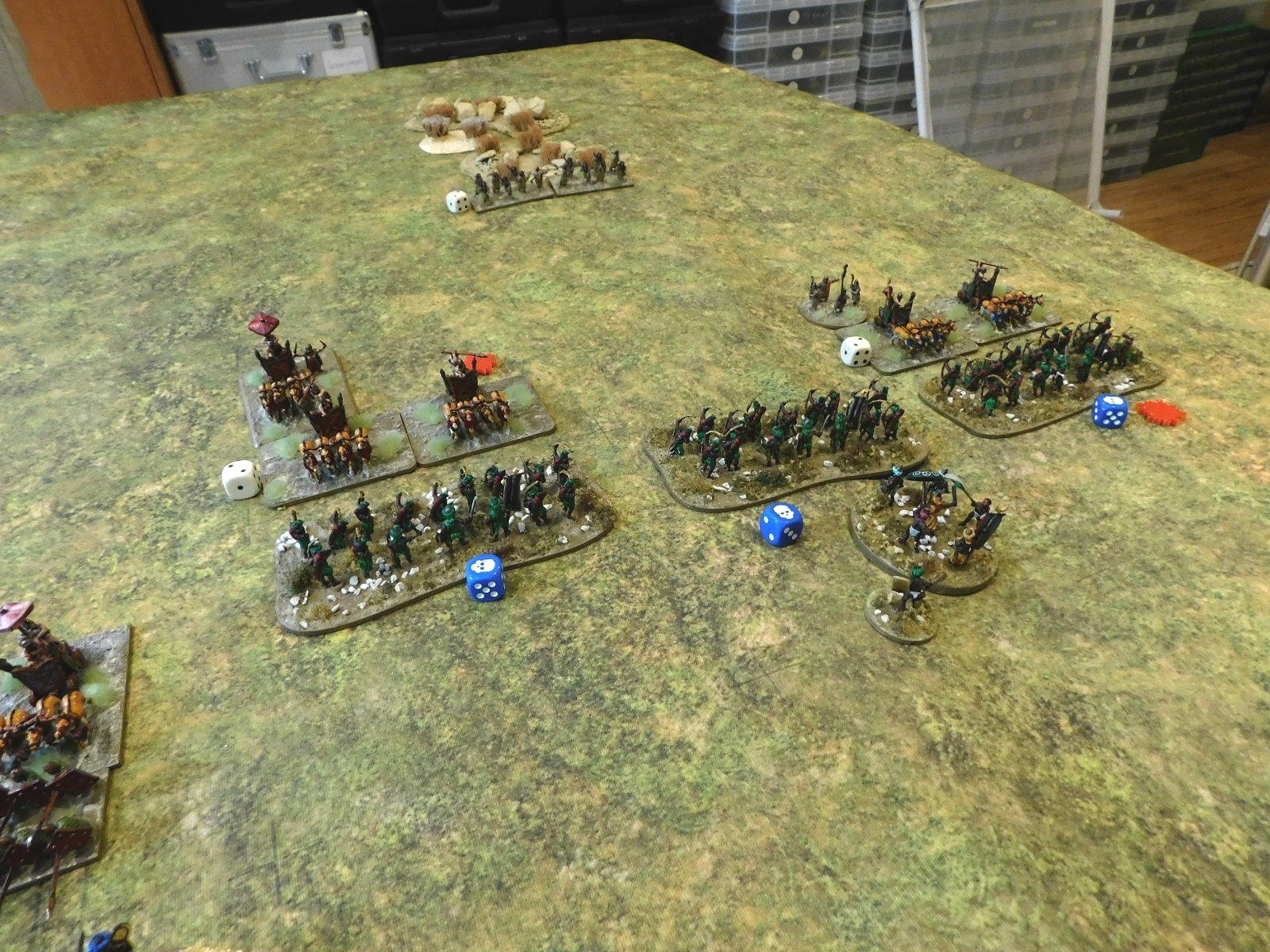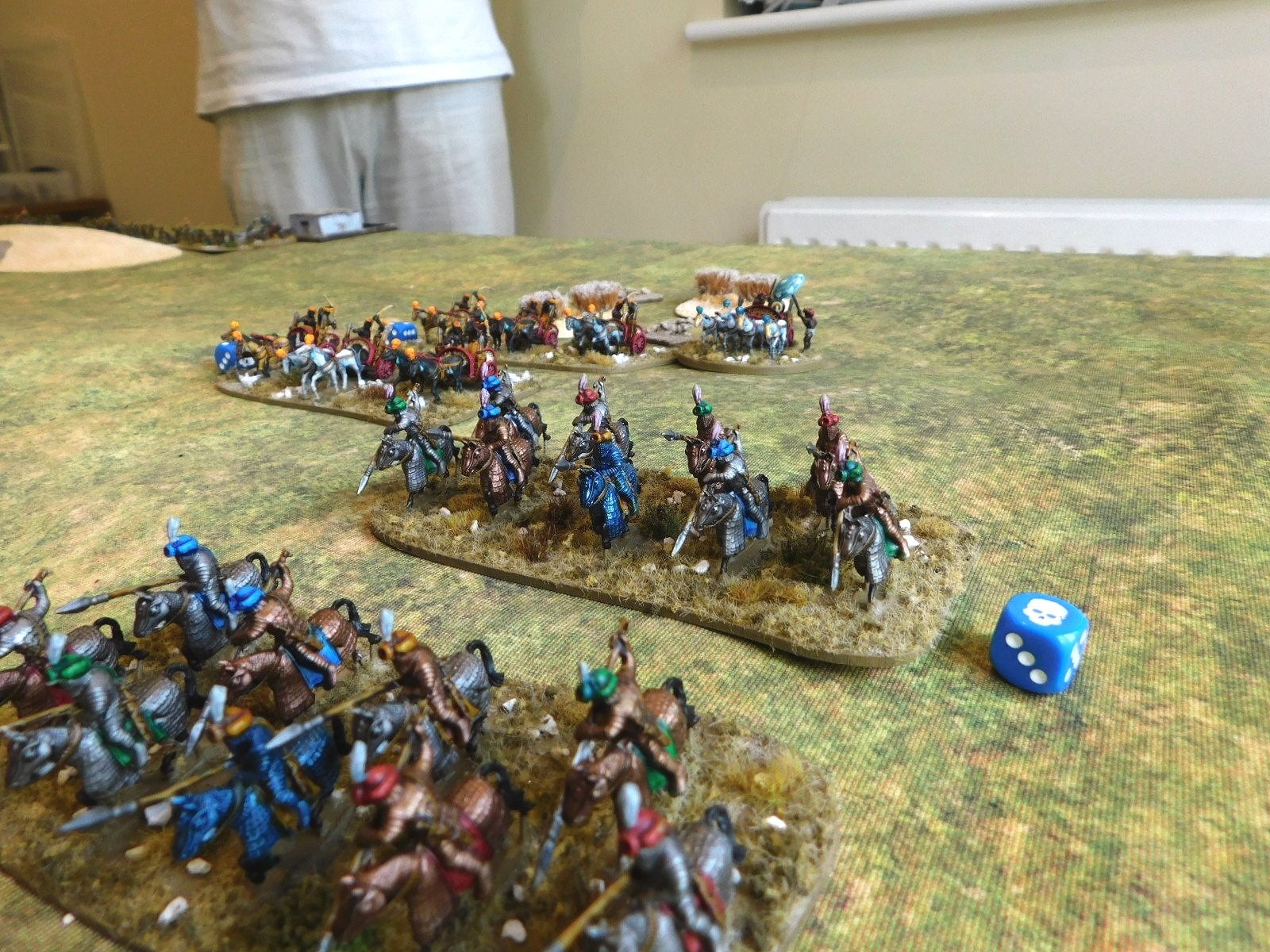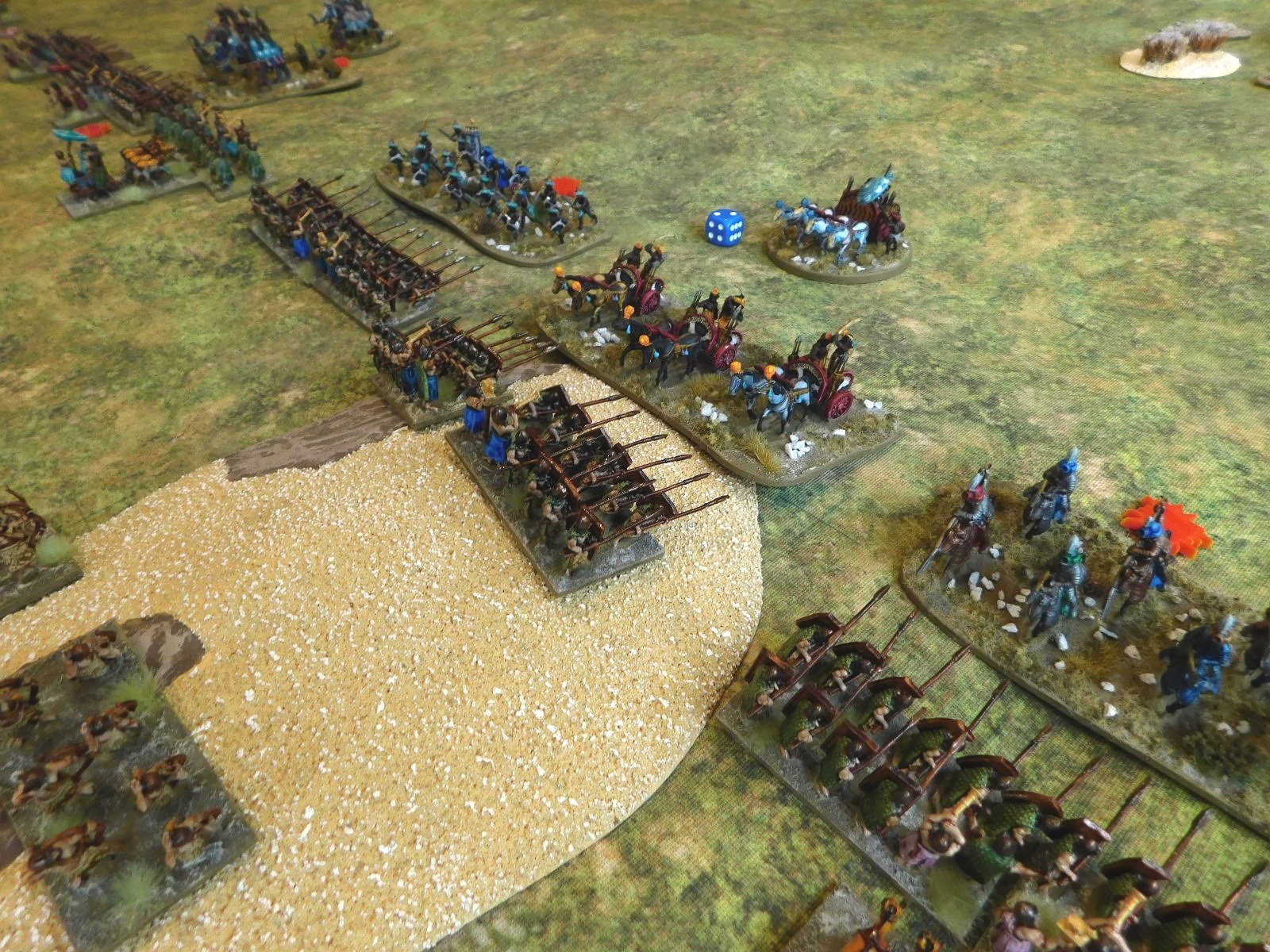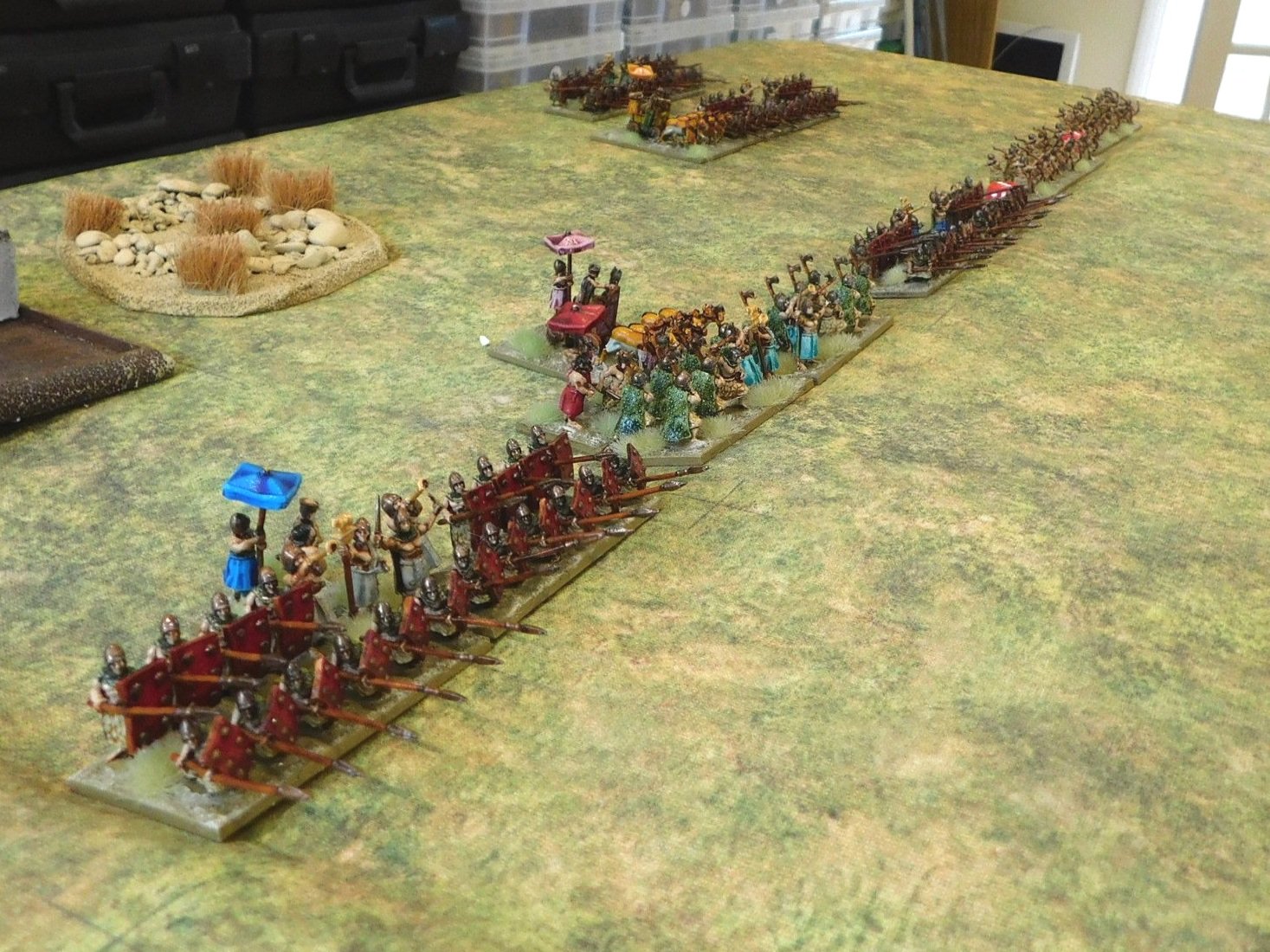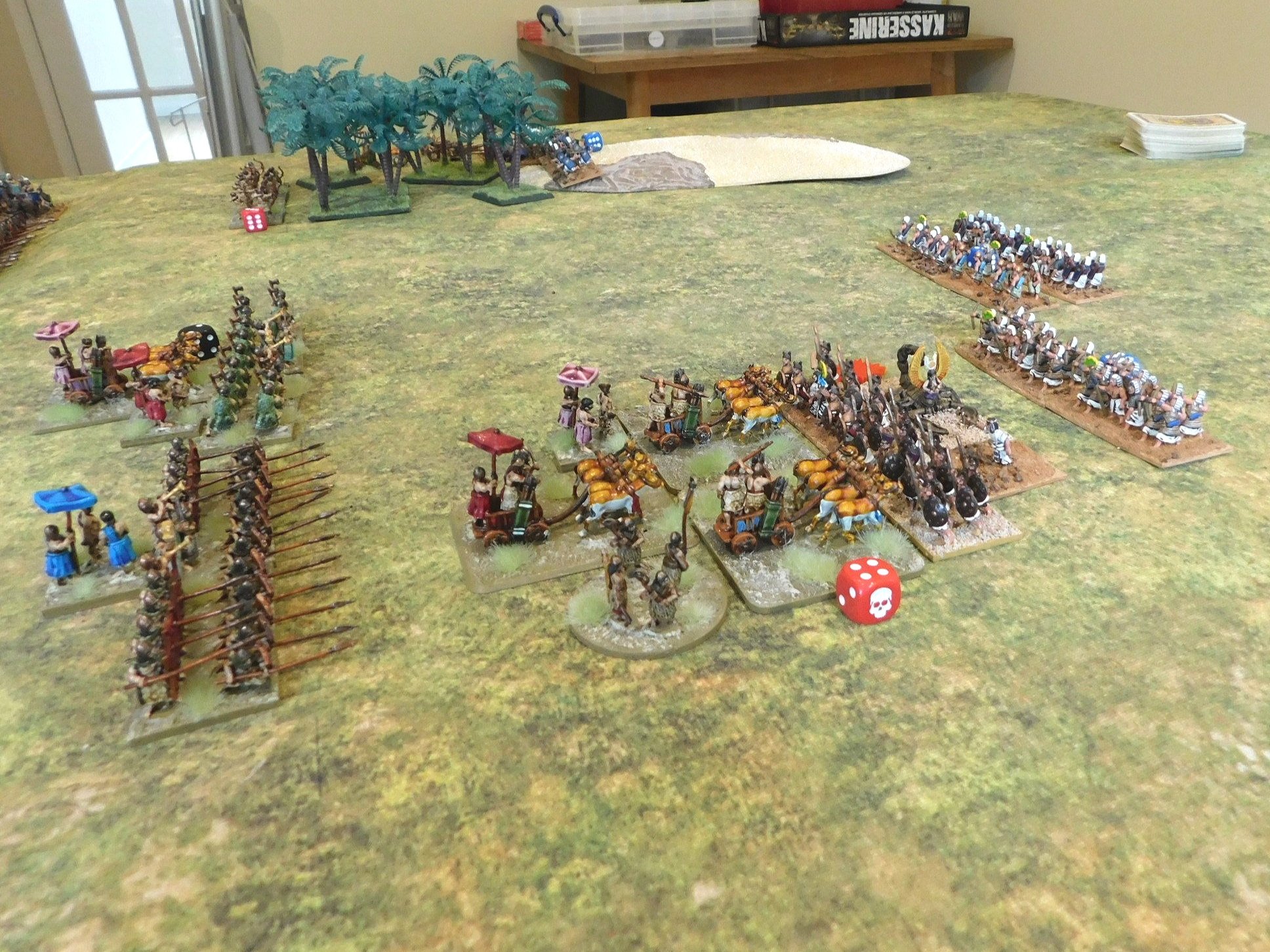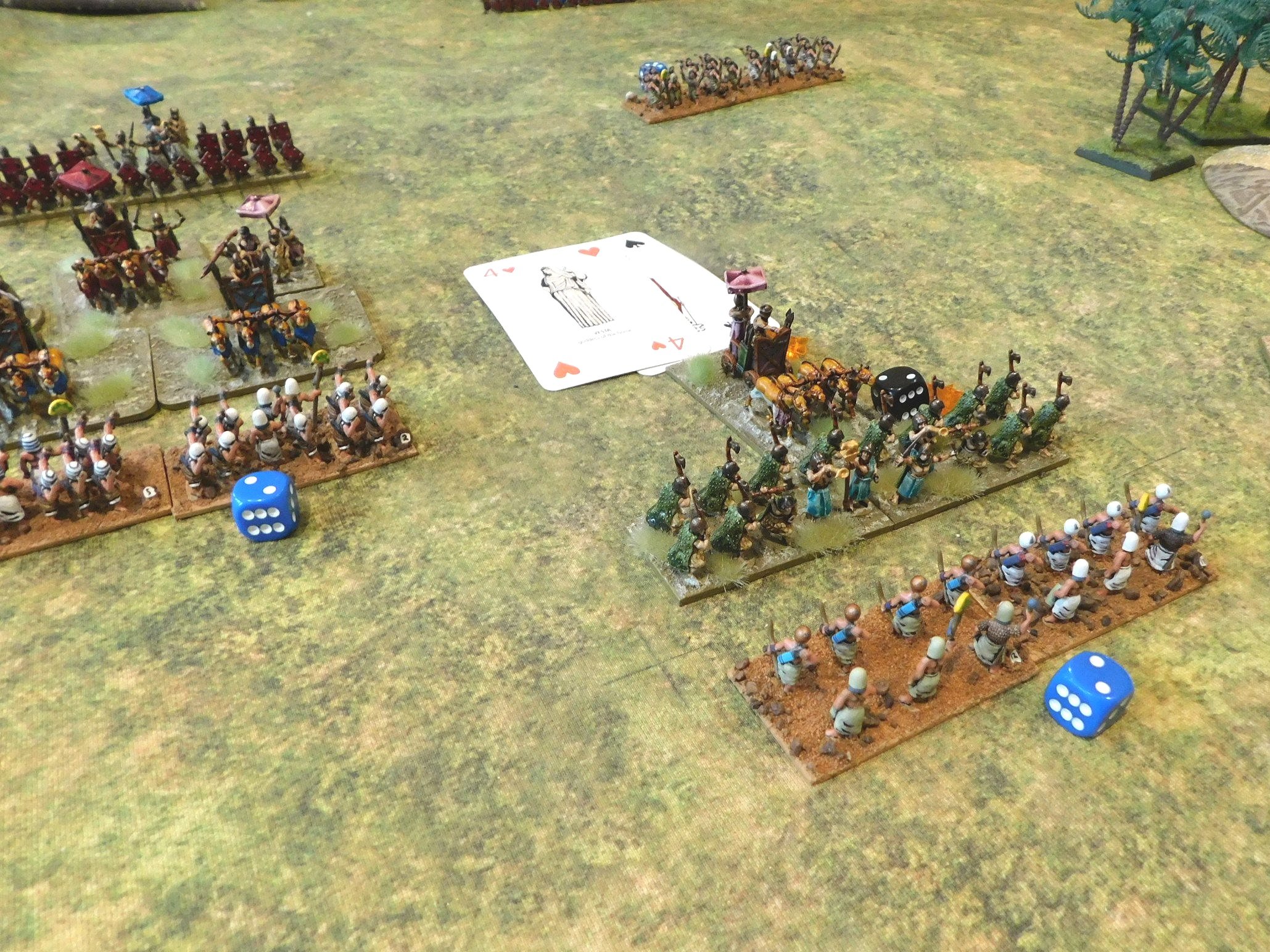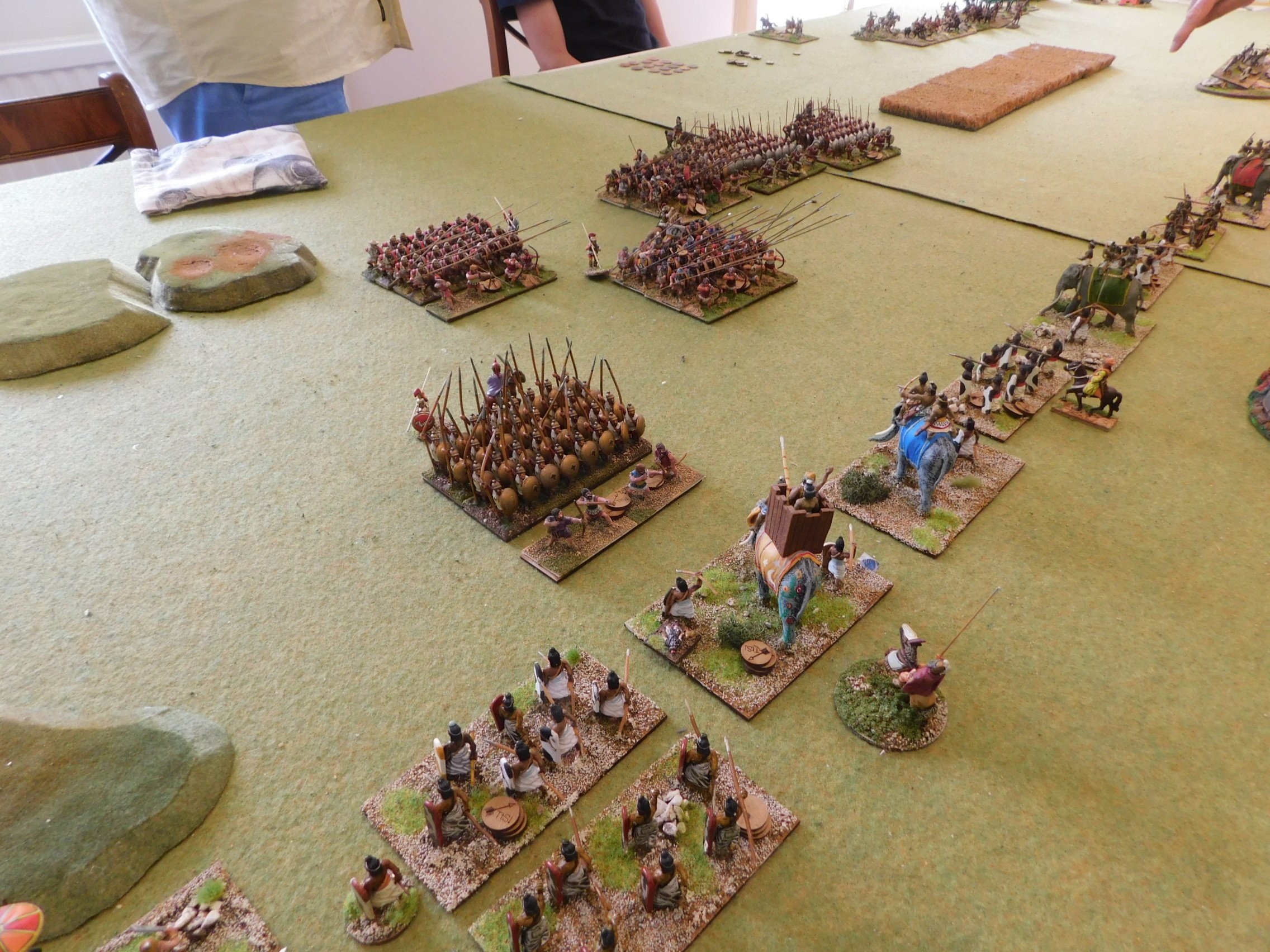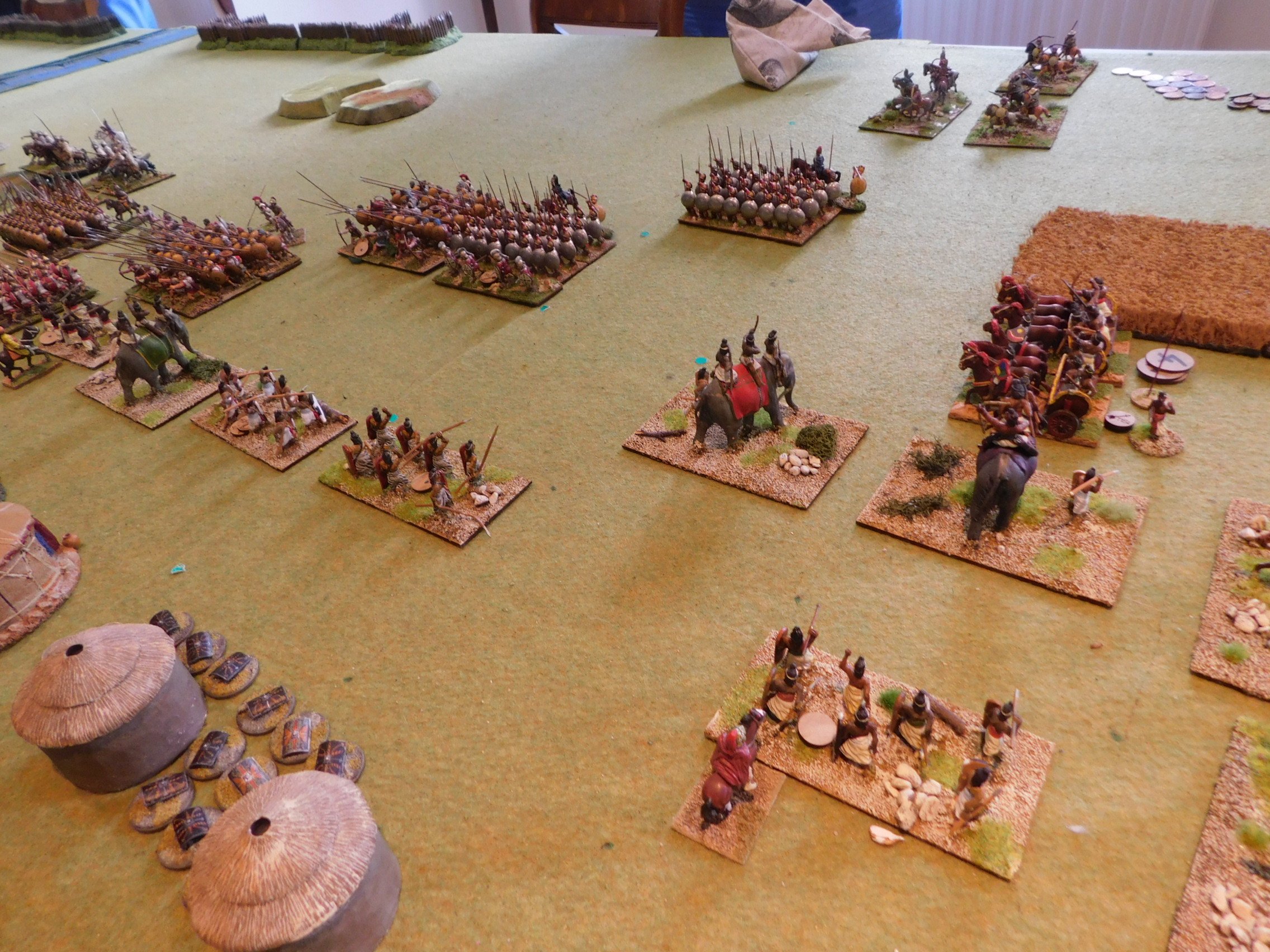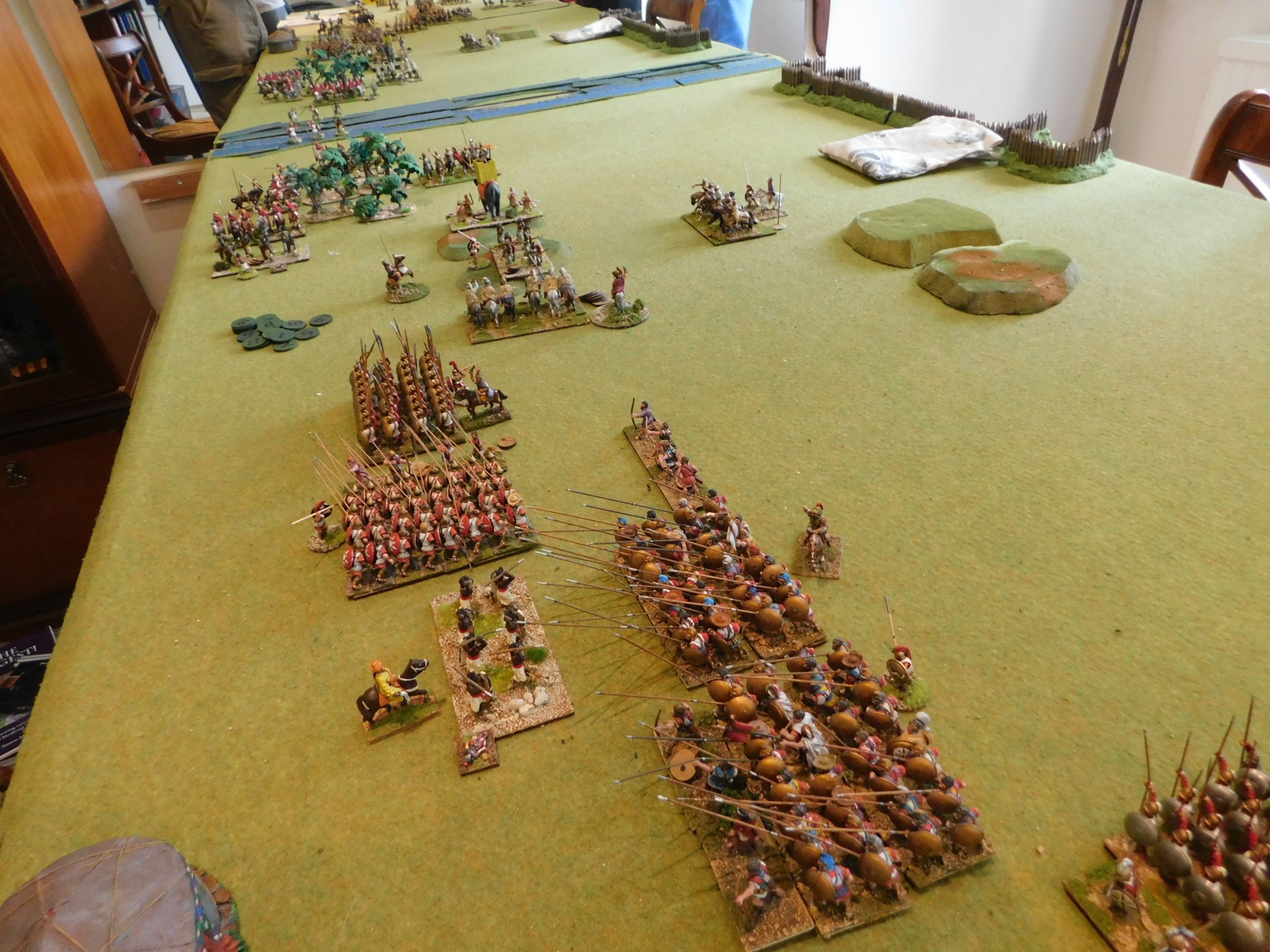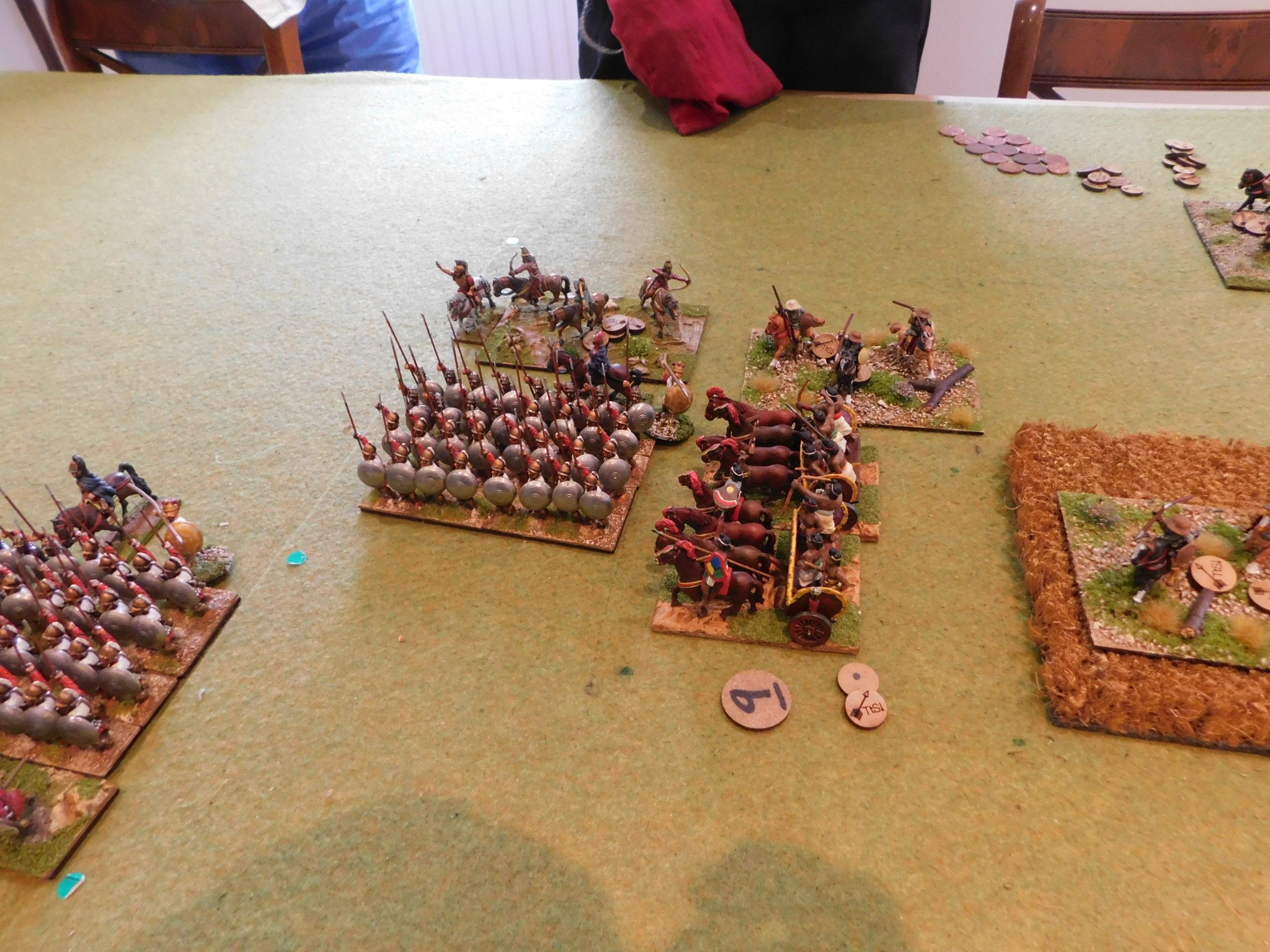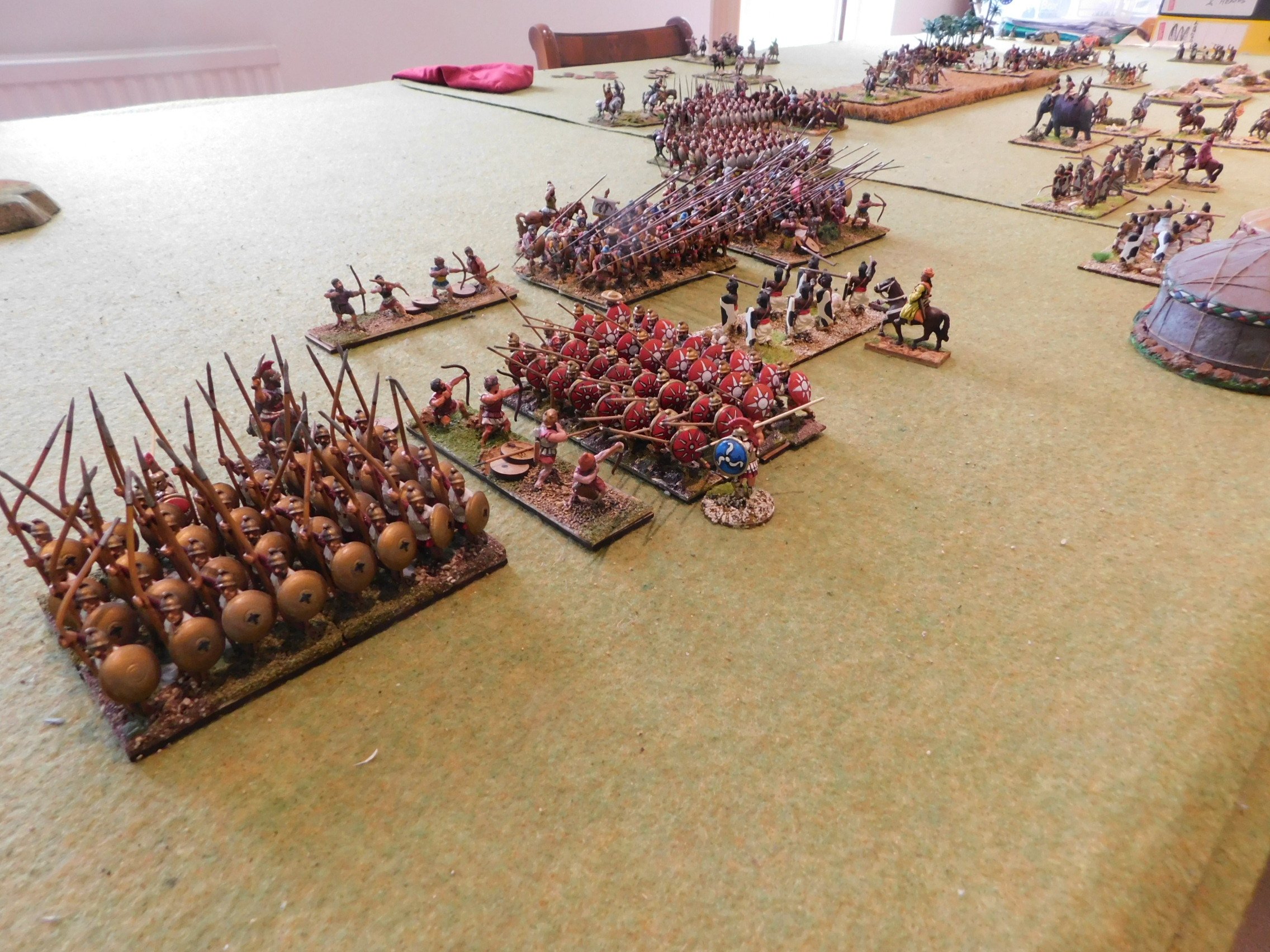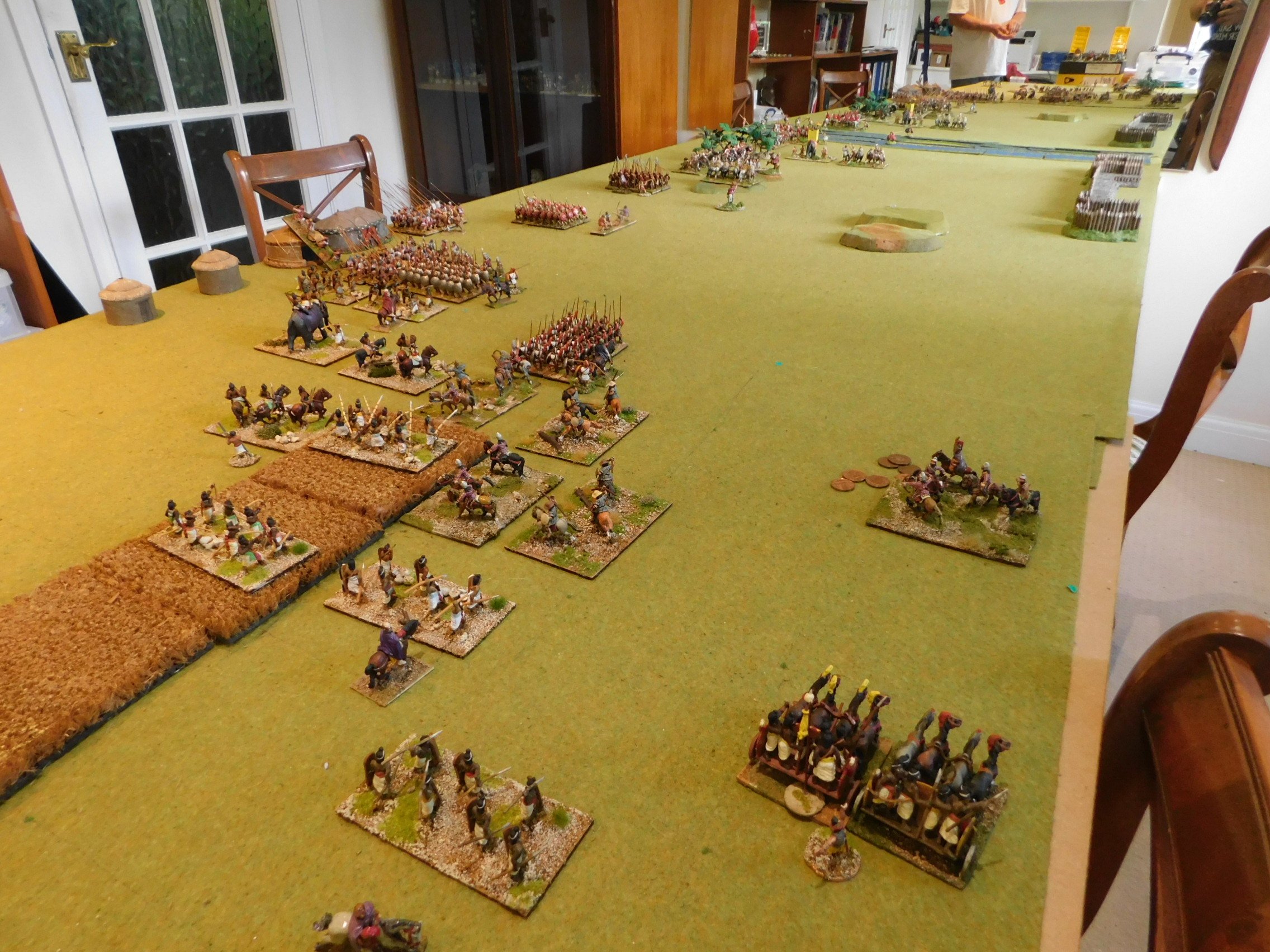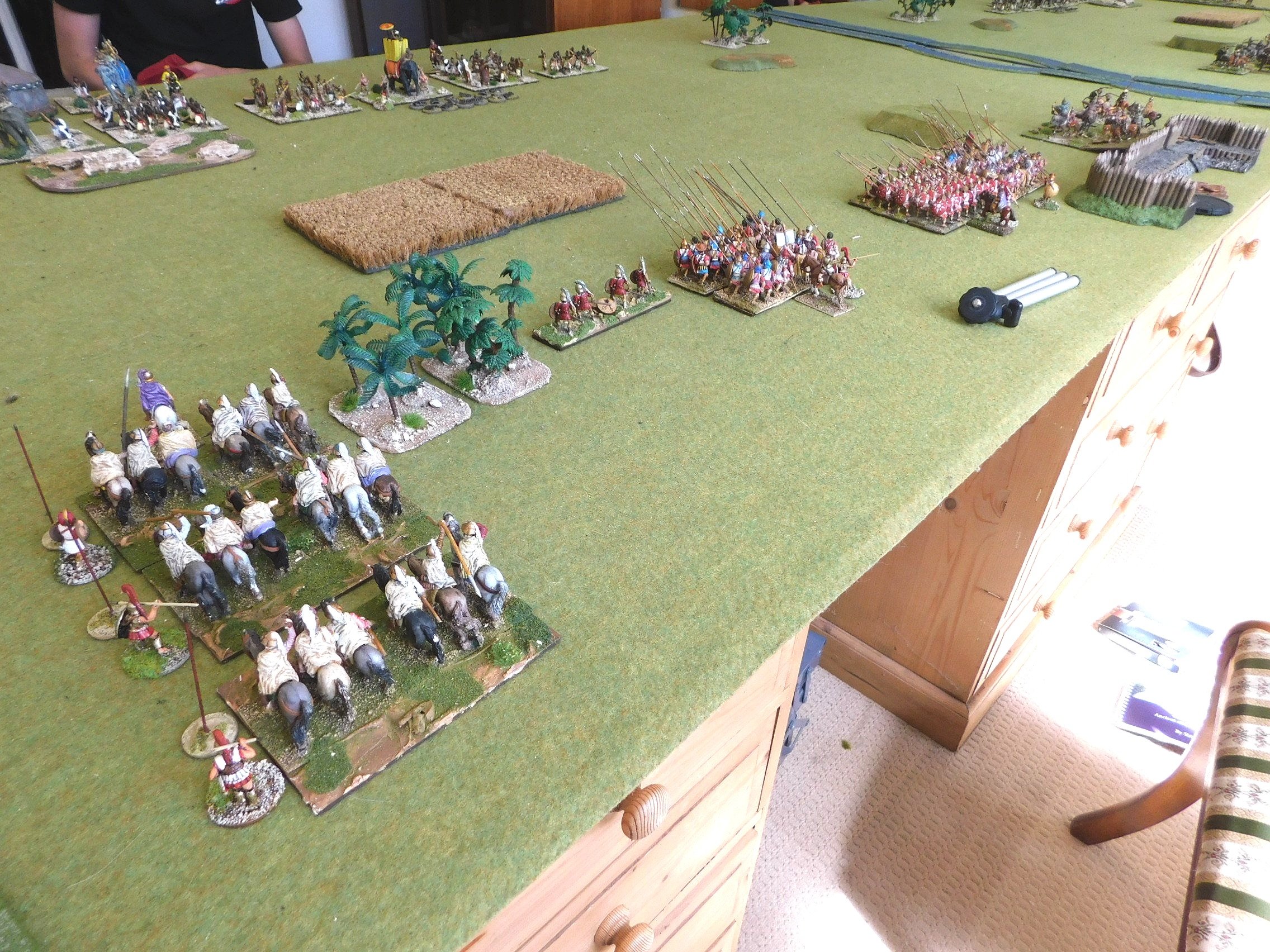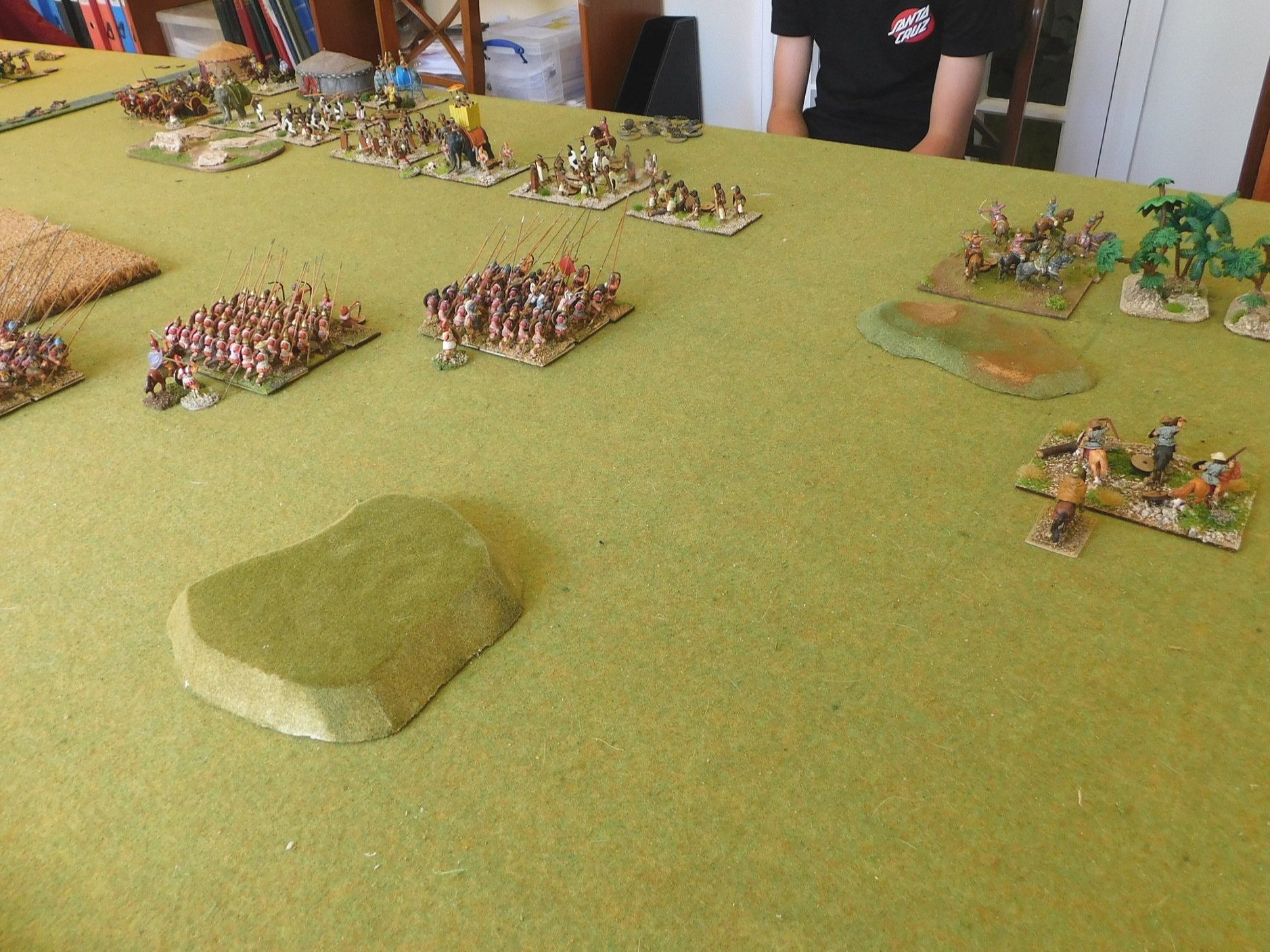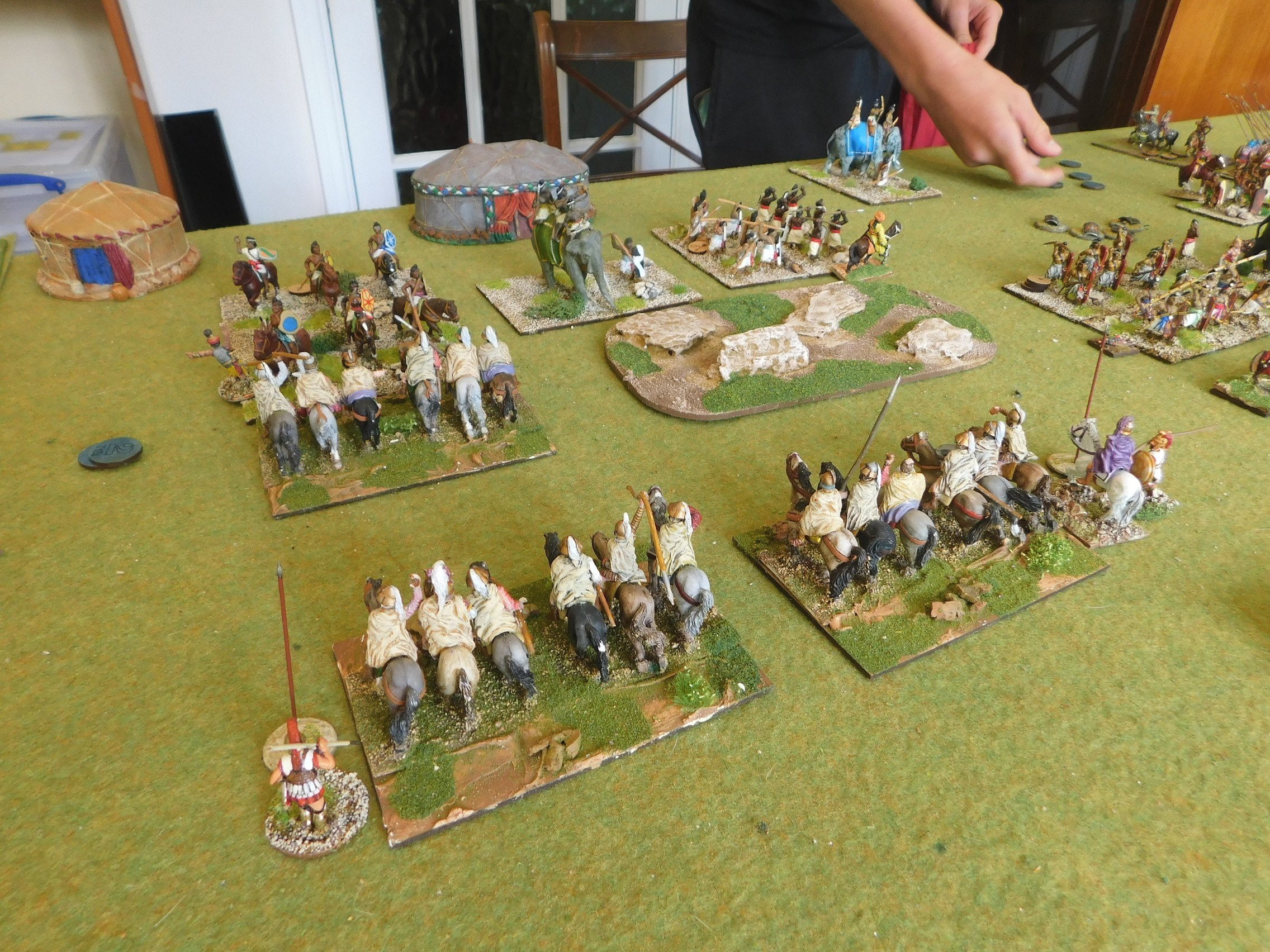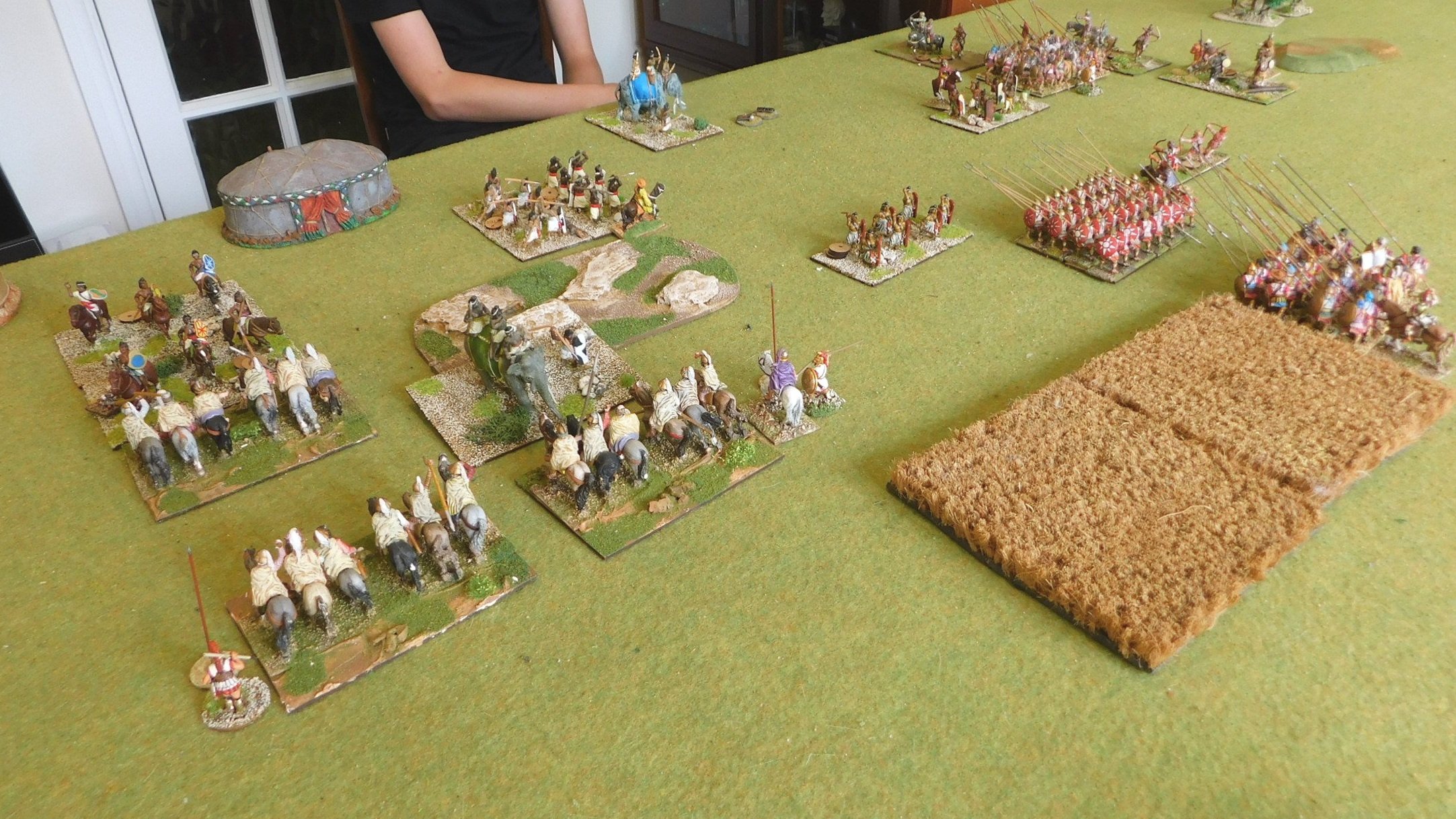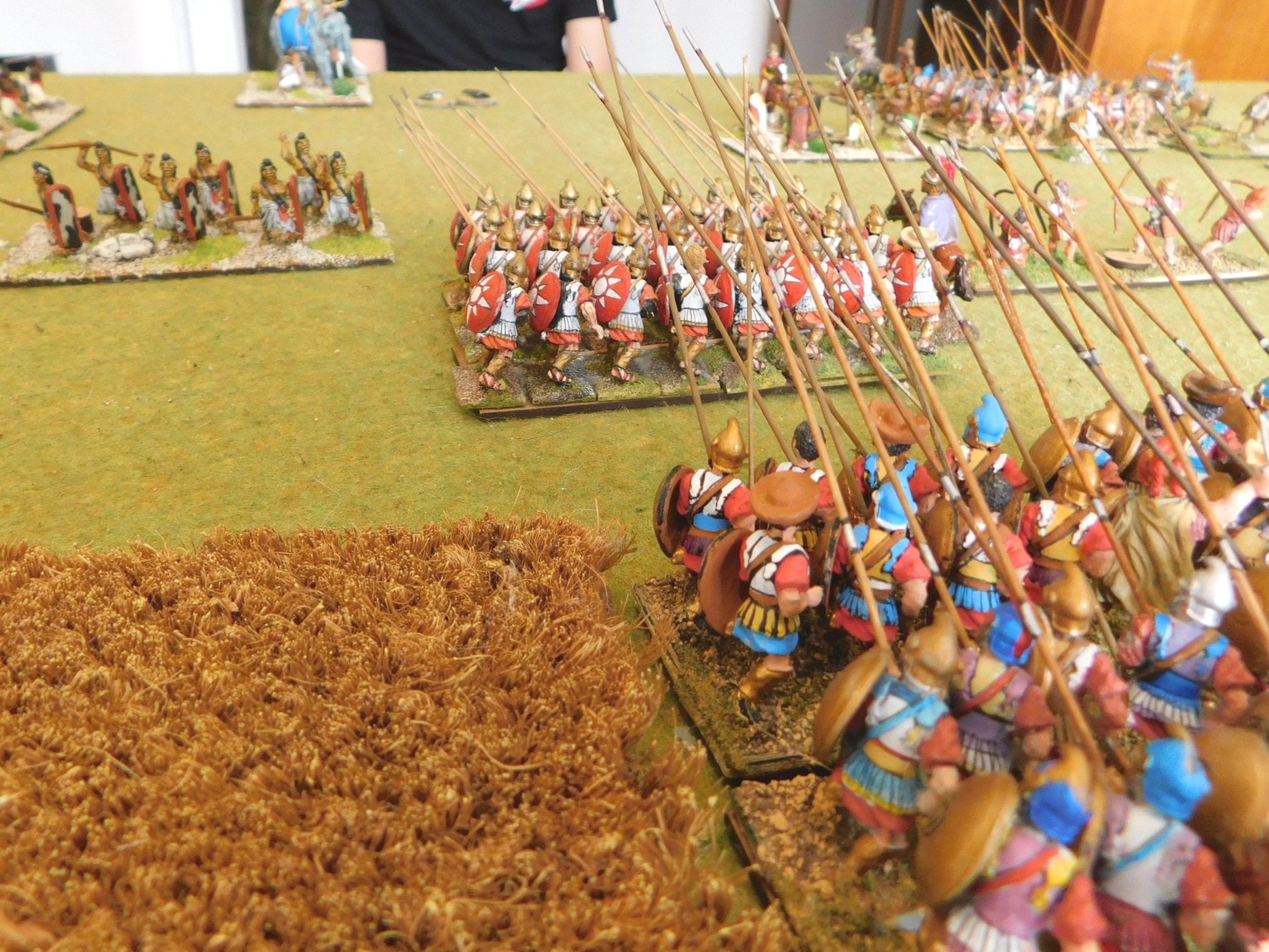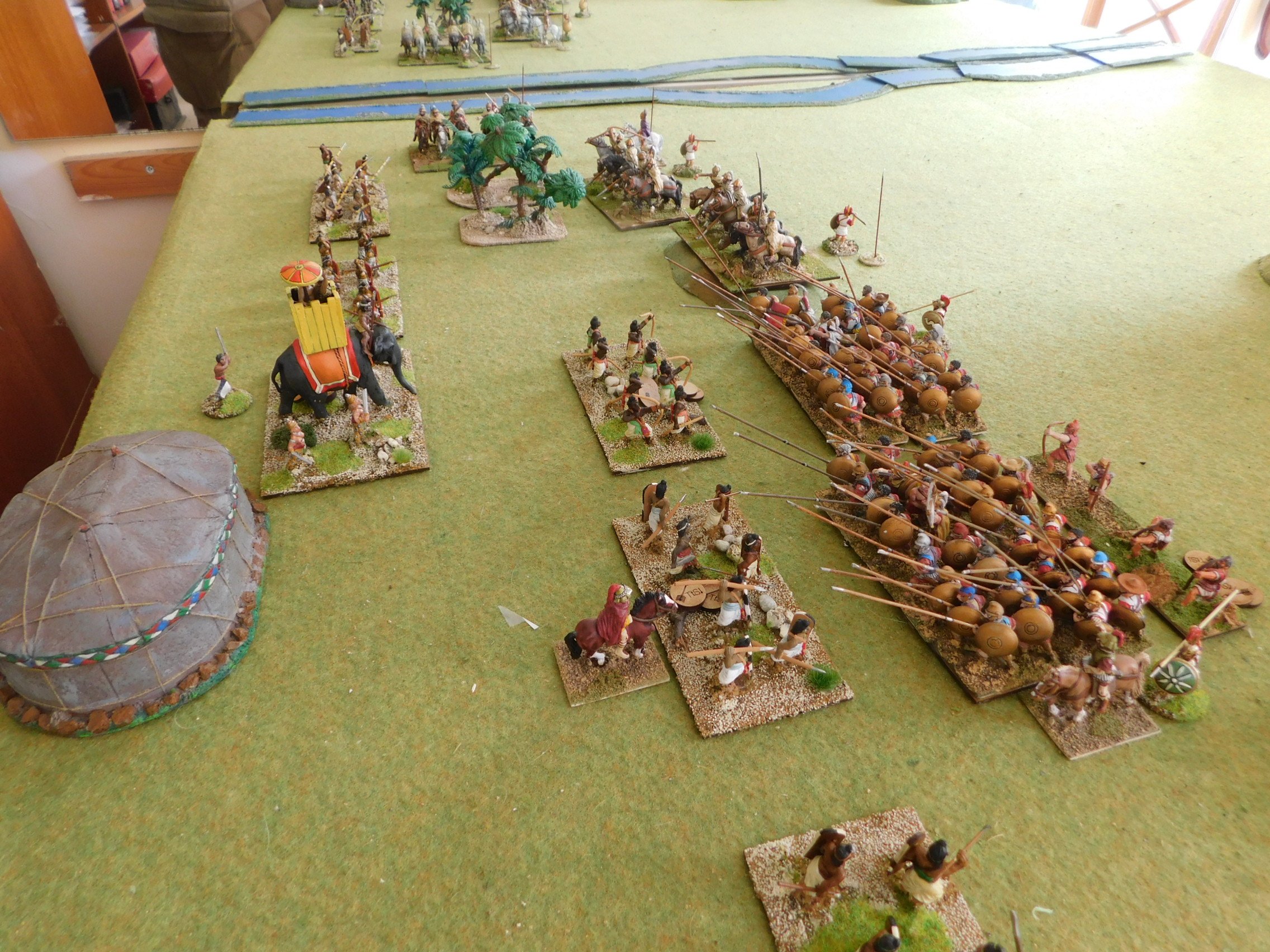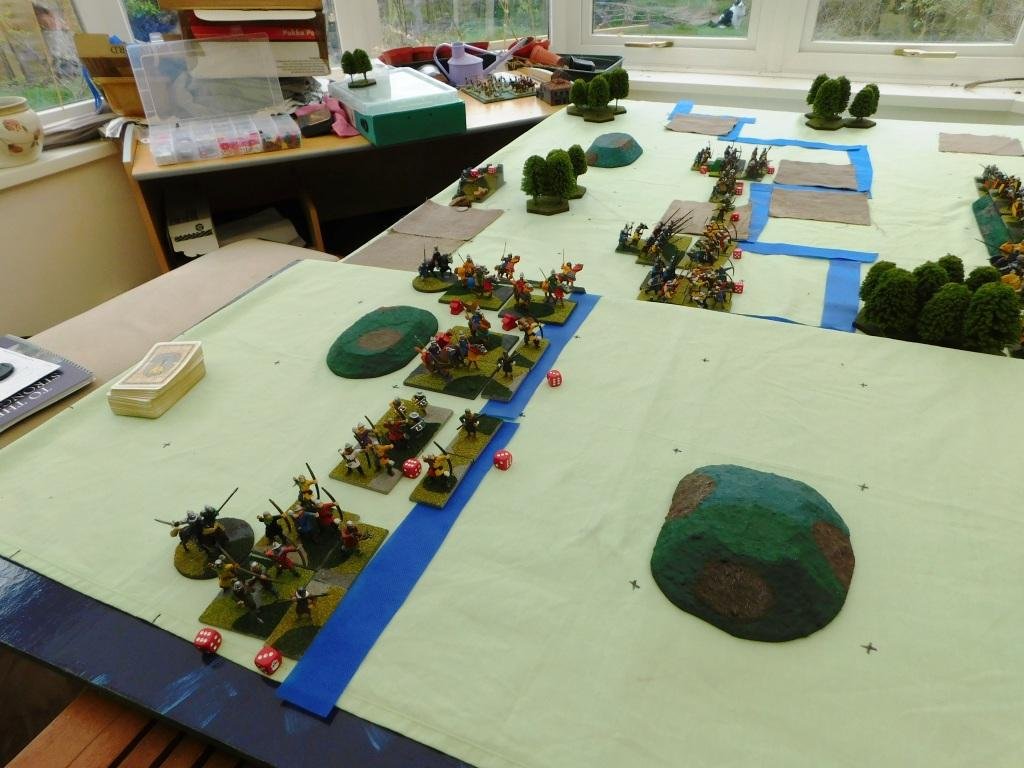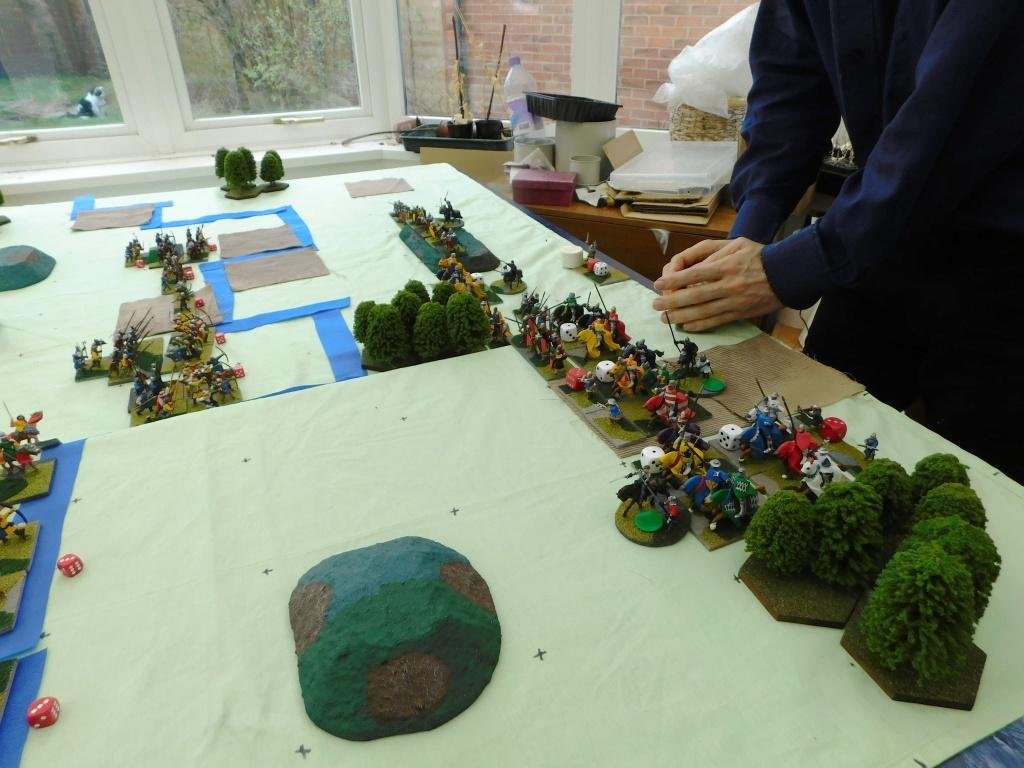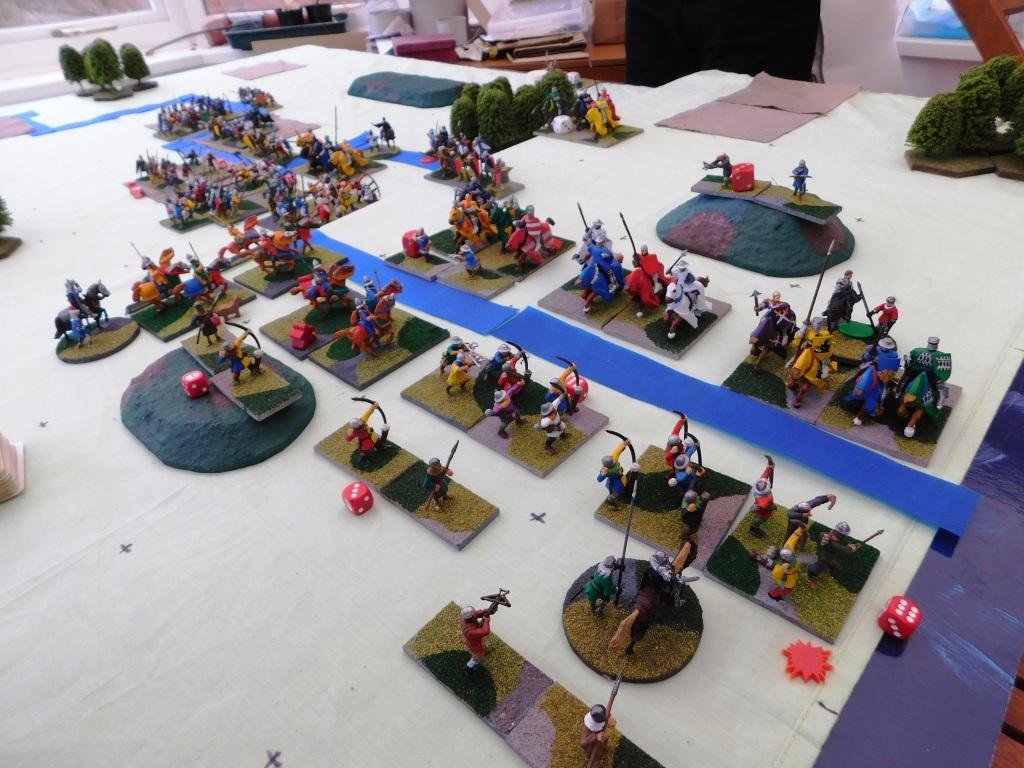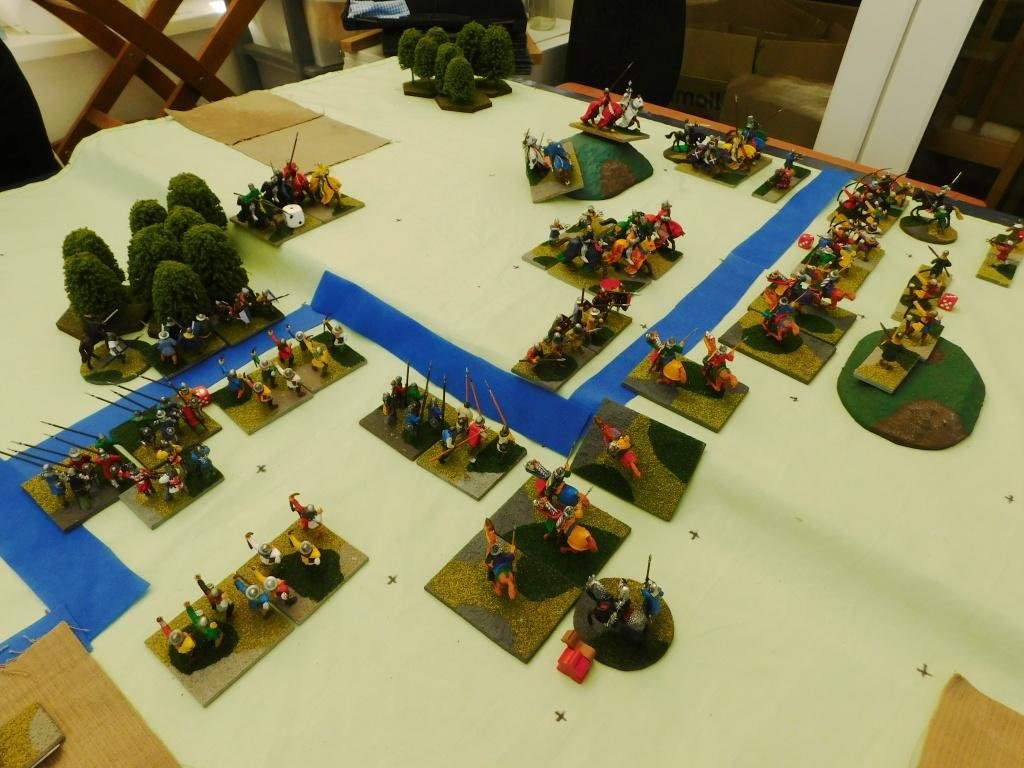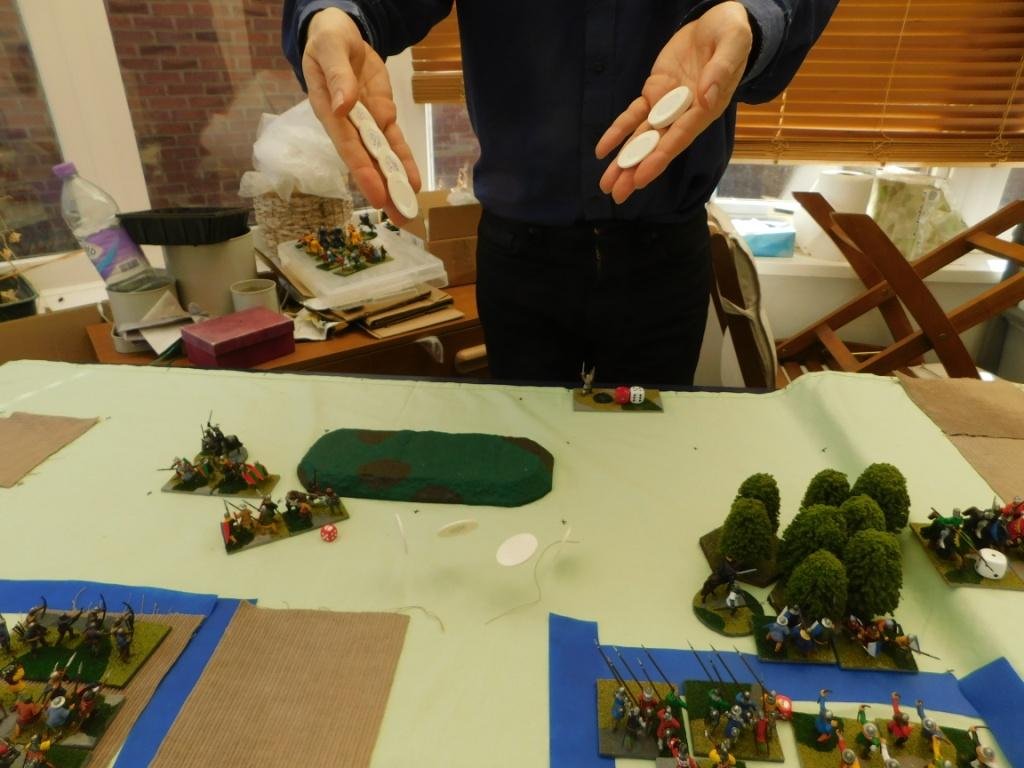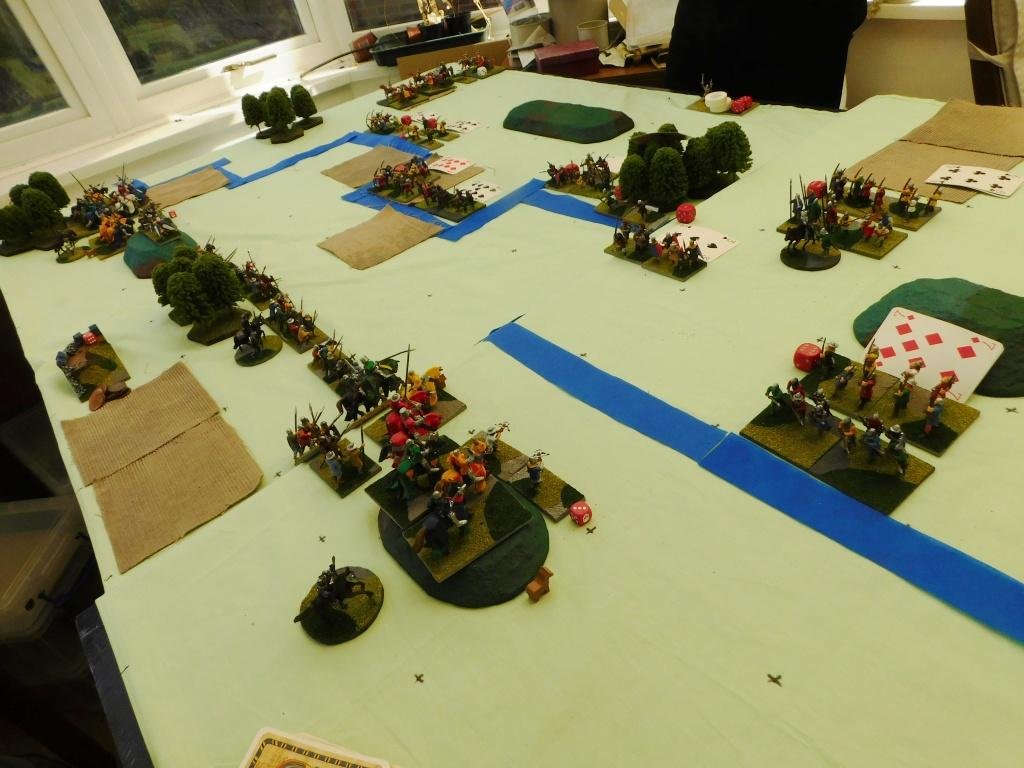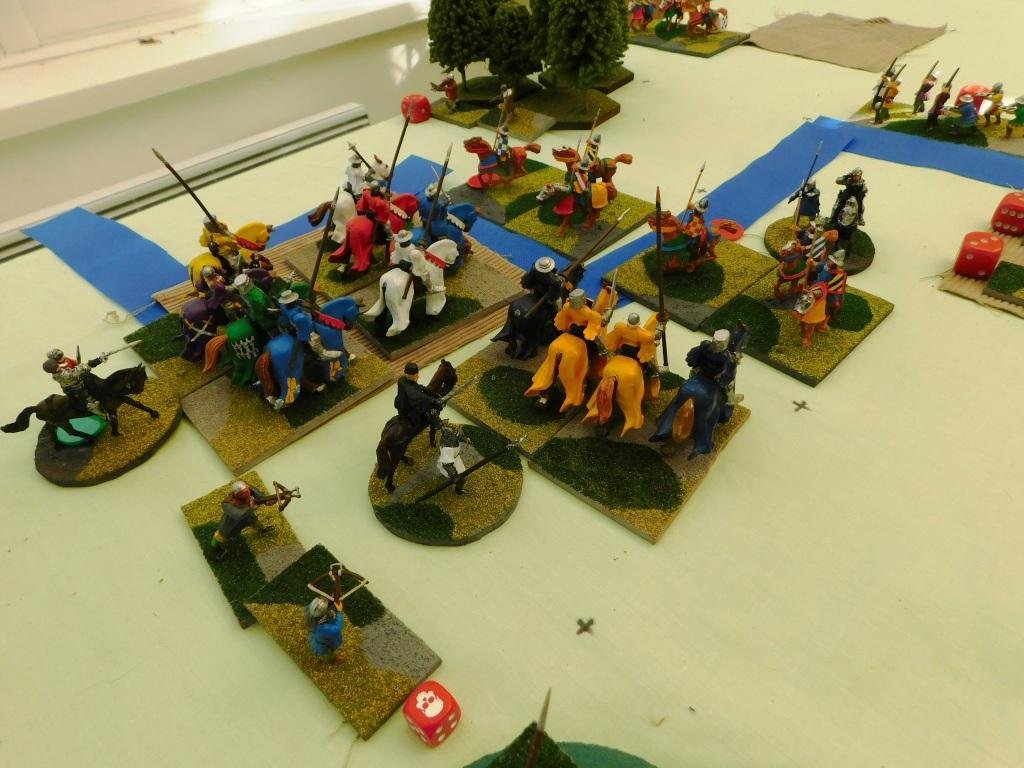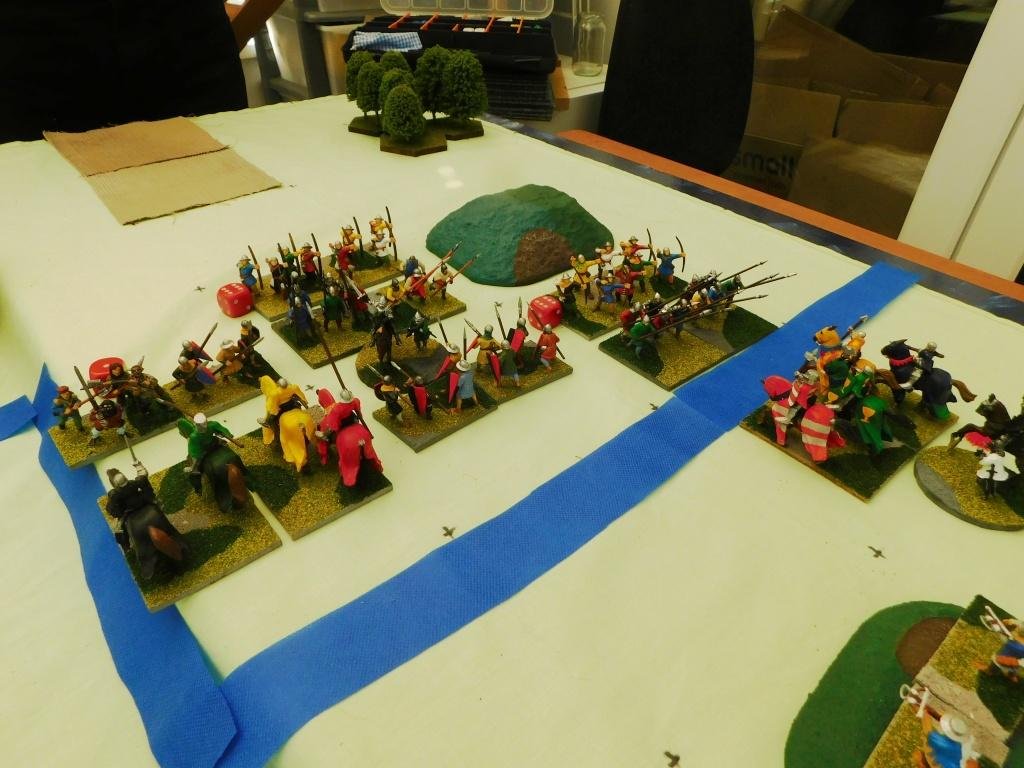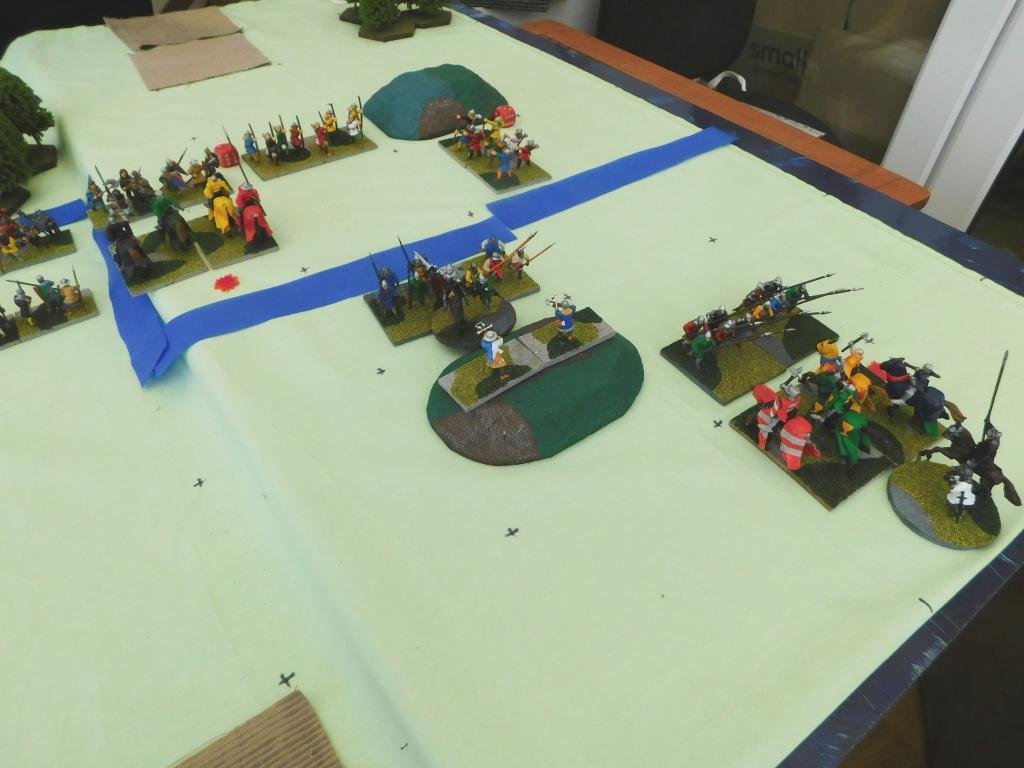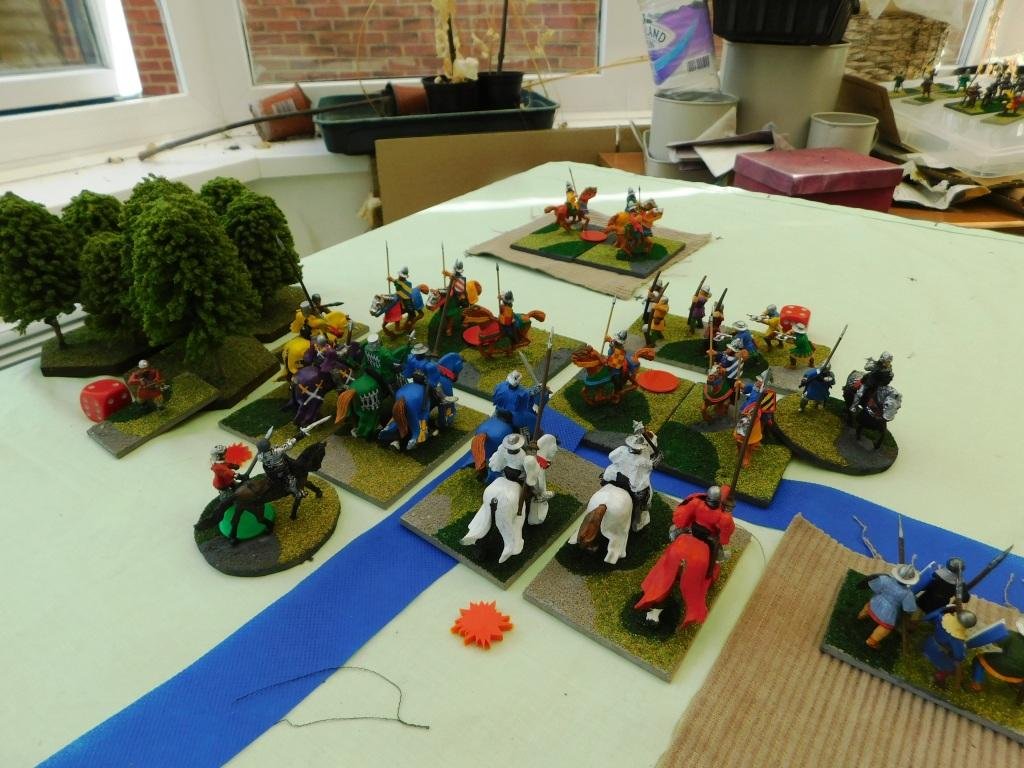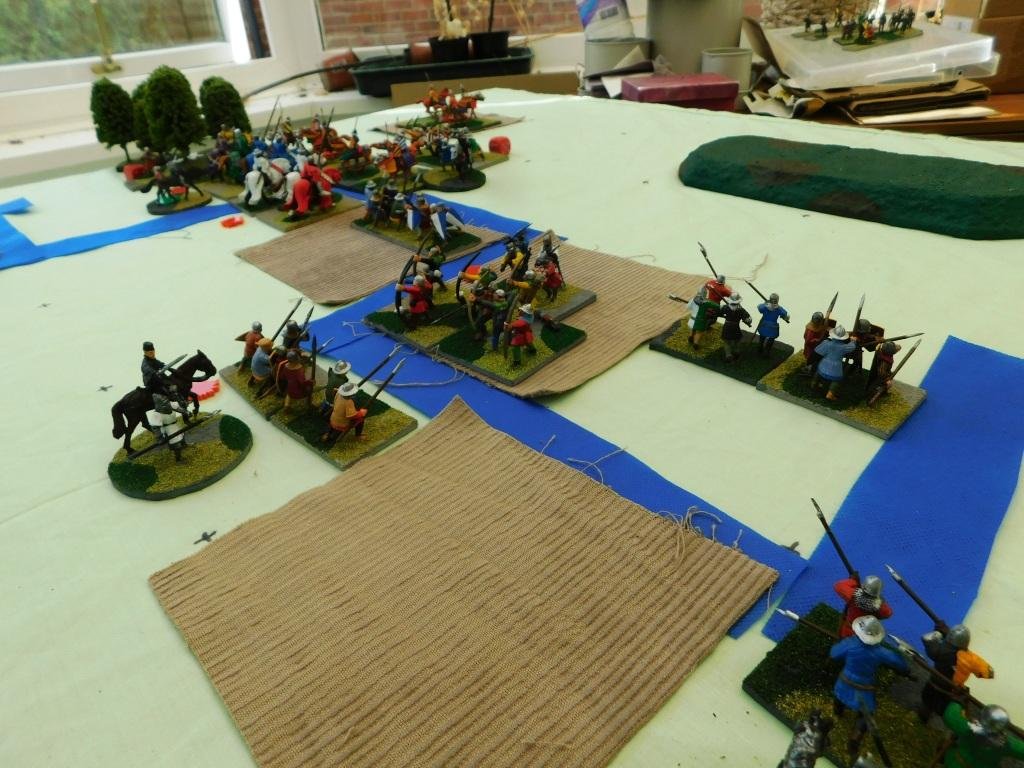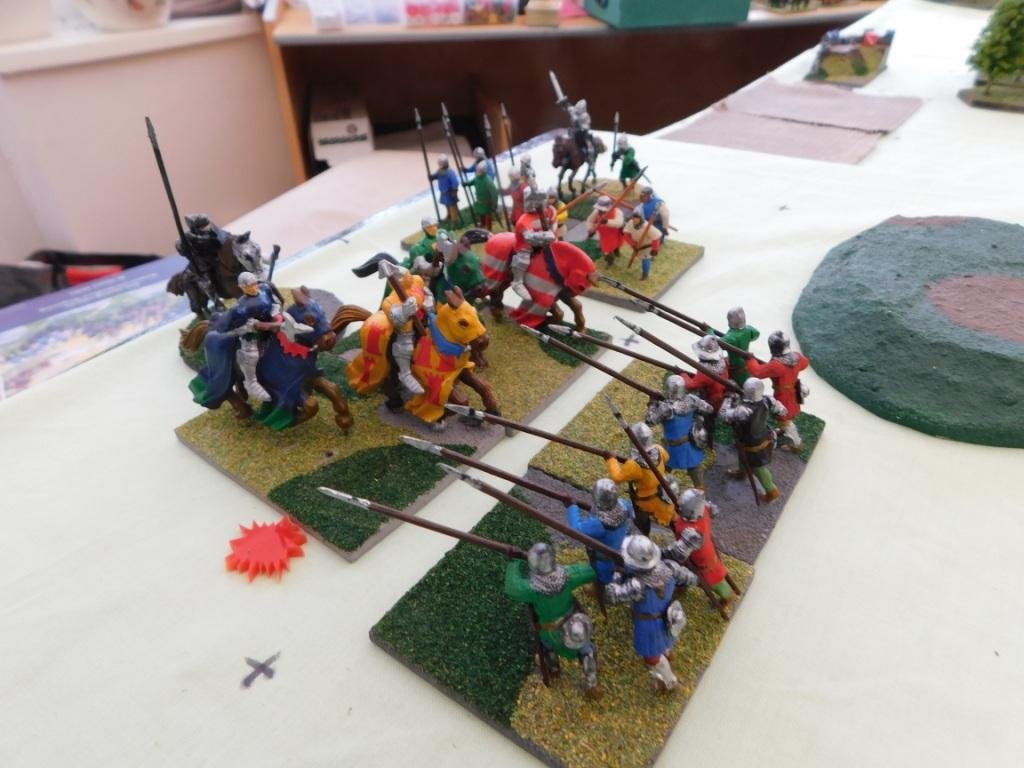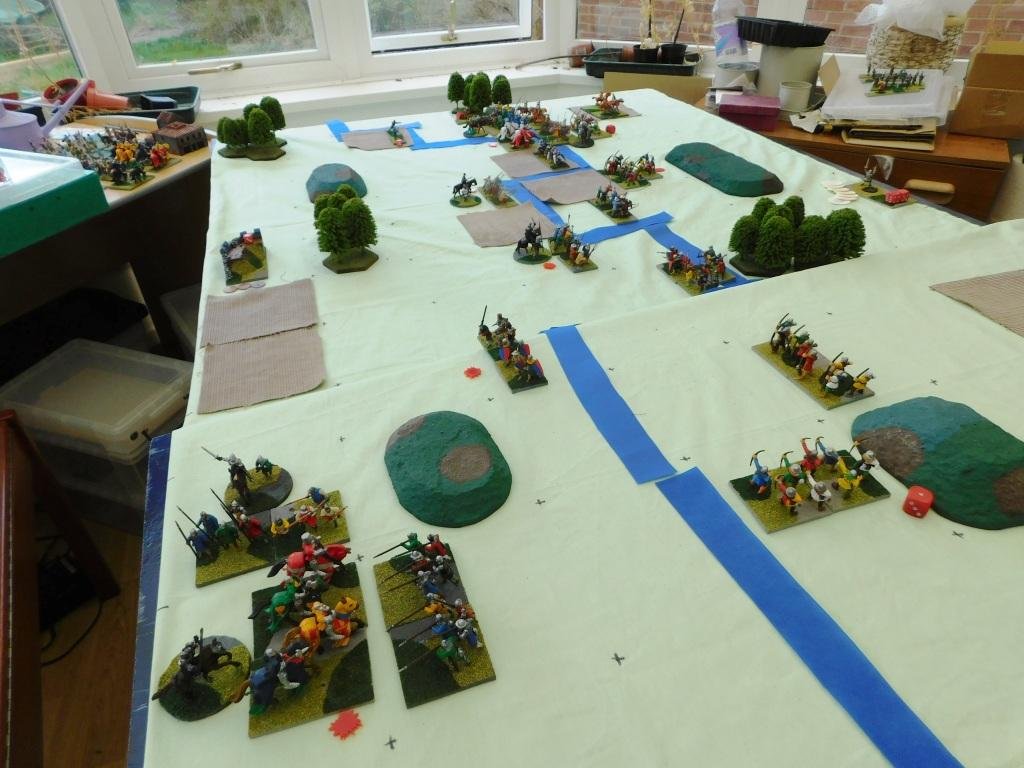The Return Match
/Time for the re-match: this time I would take the Burgundian Ordnance and John would take the Medieval Scandinavians.
My plan was hold the centre with my infantry and half my Knights, and use the rest of my Knights to lap around the ends of his line, hopefully achieving some kind of roll-up. Comparing notes afterwards, John’s plan was to close with my troops as quickly as possible, using sheer mass and ferocity to win victory.
I had the initiative, and wasted no time in getting forward into the centre of the field. I then halted my centre and waited until the Scandies came forward.
The Scandies did indeed come forward, with one warband getting out in front, and soon battle was generally joined in the centre of the field.
Warbands are pretty hard to kill, even with Knights, but all I needed to do was to hold them in place whilst my horns lapped around his flanks.
On my right flank, this worked like a dream: a squadron of Knights got into the perfect position for a flank charge on the Scandinavian main line and thundered forward to do enough damage that a Burgundian spear-and-longbow unit could finish off the unfortunate warband that was their target.
Unfortunately on my left flank I got a bit too enthusiastic, and although the initial outflanking manoeuvre worked and sent more Scandies from the field, his lone unit of tax-free Knights was able to get forward fast enough to out-flank my out-flankers and consign one quarter of my Knights to the recycle bin! Whoops!
Fortunately this didn’t matter, as my right flank continued to chew through his centre having achieved exactly the roll-up I was after.
I will spare you the gory details, but you’ll see from the pictures below that pinned from the front and hit from the flank (by Knights as well) is not just a recipe but a whole cook book for disaster!
The coup de grace (to put it as the Burgundians would) came either from a unit of my infantry taking the enemy camp or the loss of a unit of light archers being the final straw that broke the Scandinavian back. To be honest, I can’t remember which.
A great game, for me at any rate, and a cautionary tale for warband armies going up against more combined arms forces: watch those flanks!




























